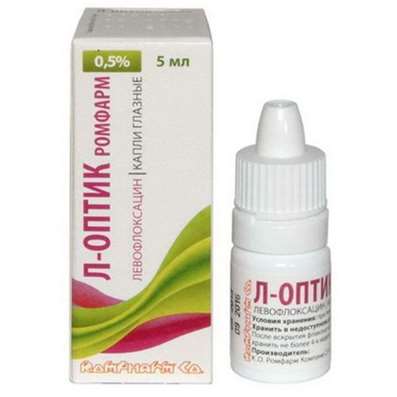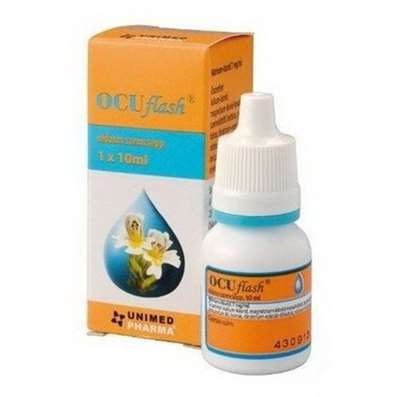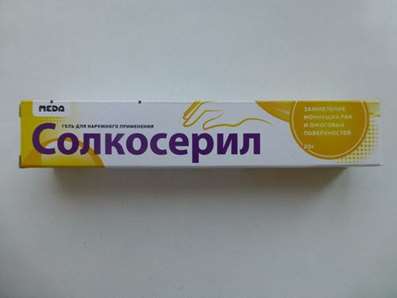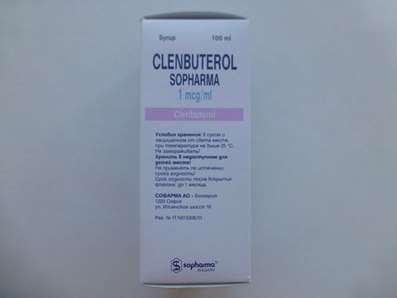Instruction for use: Ginkgo Bilobae foliorum extract
I want this, give me price
Trade name of the drug – Tanakan, Bilobil, Bilobil forte, Ginkoum, Memoplant, Bilobyl intens, Ginos, Ginkgo biloba, Vitrum Memori, Gingium, Ginkyo, Ginkgo bilobate leaves
Russianname
Ginkgo Bilobae foliorum extract
The Latin name of the substance Ginkgo Bilobae foliorum extract
Extractum foliorum Ginkgo bilobae (genus. Extracti foliorum Ginkgo bilobae)
Pharmacological group:
Angioprotectors and microcirculatory correctors
Correctors of cerebral circulation disorders
The nosological classification (ICD-10)
F00 Dementia in Alzheimer's Disease (G30 +): Alzheimer's dementia; Alzheimer's dementia; Dementia in Alzheimer's disease
F01 Vascular dementia: Cerebrovascular dementia
F04 Organic amnestic syndrome not caused by alcohol or other psychoactive substances: Korsakov's psychosis; Korsakov's syndrome; Syndrome amnestic
F51.1 Drowsiness [hypersomnia] of inorganic etiology: Drowsiness; hypersomnia
G47.1 Disturbances in the form of increased drowsiness [hypersomnia]
G93.4 Unspecified Encephalopathy: bilirubin encephalopathy; lacunarity status; Tremor when portal-systemic encephalopathy; The latent hepatic encephalopathy; Atherosclerotic encephalopathy; Hypertensive encephalopathy; hypoxic encephalopathy; dismetabolic encephalopathy; Encephalopathy; brain lesion; Porto-caval encephalopathy; Vascular encephalopathy; Traumatic encephalopathy; encephalopathy; encephalopathy; Encephalopathy secondary genesis; Encephalopathy discirculatory; Encephalopathy portocaval; epileptic encephalopathy; hemorrhagic shock and encephalopathy syndrome; Subacute spongiform encephalopathy
H35.3 Macular and posterior pole degeneration: Macular degeneration; Retinal dystrophy; Angiosclerotic maculodystrophy; Age-related macular degeneration; Nontranssudative forms of macular degeneration; Degenerative changes of a yellow stain; Stargardt's disease; Degenerative processes in the yellow spot; Retinal degeneration; Macular degeneration; Pigmented degeneration of the retina; Macular degeneration age (senile); Dystrophy of the mesh membrane; Hereditary pigmentary degeneration of the retina; Hereditary taperoteretal degenerations; Older macular degeneration
H36.0 Diabetic retinopathy (E10-E14 + with common fourth character .3): Haemorrhagic diabetic retinopathy; Diabetic retinopathy; Macular degeneration in patients with diabetes
H81.9 Unspecified Violation of vestibular function: Labyrinth, vestibular disorders; Labyrinth disorders; vestibular nystagmus; kohleovestibulyarny disorder; Kohleovestibulyarny syndrome vascular origin; Violation of the microcirculation in the maze; Ischemic disorders of hearing and balance
I69 The effects of cerebrovascular disease: Ischemic and post-stroke condition; Residual effects of hemorrhagic stroke; Residual effects of ischemic stroke; Residual effects of cerebral circulation; Residual effects of subarachnoid hemorrhage; Ischemic stroke; Transferred thromboembolic stroke; The consequence of cerebrovascular accident; The consequence of insufficient blood supply to the brain; Consequences of ischemic stroke; The consequences of a stroke; Postapopleksicheskoe state; post-stroke period; post-stroke syndrome; Condition after stroke; Condition after cerebrovascular accidents; Chronic cerebrovascular insufficiency
I73.0 Raynaud's Syndrome: Raynaud's syndrome Leriche; Raynaud's disease; Raynaud's phenomenon; RaynaudLeriche syndrome; Raynaud's disease; Raynaud's syndrome with trophic disorders; Peripheral angiopathy
I79.2 Peripheral angiopathy in diseases classified elsewhere: diabetic angiopathy; Angiopathy in diabetes; arteriosclerosis diabetic; Pain in lesions of peripheral nerves; Diabetic angiopathy; Diabetic microangiopathy; Diabetic vascular disease; Intermittent angioneurotic disbaziya; Macroangiopathy in diabetes; microangiopathy; Microangiopathy in diabetes mellitus; Tingling sensations in the hands and feet; Coldness in the extremities; Peripheral angiopathy; Peripheral arterial disease; Sclerosis Menkeberga; Chronic obliterating diseases of arteries
R41.3.0 * Reduced memory: memory loss; memory impairment; The weakening of memory; memory impairment; Forgetfulness; Violation memory; Memory impairment in elderly patients; memory impairment; Memory impairment in relation to recent events
R53 Malfunction and fatigue: Asthenic disorders; Asthenic conditions; Asthenic phenomena; Asthenic syndrome; Asthenic disorder; Asthenic state; Asthenic phenomenon; Asthenia; Astheno-adynamic subdepressive state; Asthenovegetative symptoms; Asthenic-autonomic symptomatology; Asthenic autonomic disorder; Asthenodepressive disorder; Astheno-depressive disorder; Asthenodepressive state; Astheno-depressive state; Asthenoneurotic disorder; Astheno-neurotic state; Fast fatiguability; Flu of young workaholics; Influenza yuppie; Diabetic asthenia; Exhaustion of the nervous system; Exhaustion physical; Malaise; Nervous depletion with depression; General mental fatigue; General physical fatigue; General malaise; Pathological fatigue; Increased fatigue; Mental fatigue; Mental exhaustion; Astenovegetative Syndrome; Chronic Fatigue Syndrome; Decrease in total activity; The state of increased fatigue; Conditions of increased fatigue; Mental fatigue; Prostration; Fatigue; Fatigability; Physical fatigue; Physical and mental fatigue; Physical overwork; Functional asthenic conditions; Chronic fatigue; Chronic asthenic conditions
T90.5 Effects of intracranial injury: Condition after traumatic brain injury; Conditions after traumatic brain injury; Traumatic encephalopathy; Residual effects of traumatic brain injury; Recovery after traumatic brain injury; Conditions after traumatic brain injury
Description of Ginkgo Bilobae foliorum extract
The standardized extract of Ginkgo biloba leaf plants (Ginkgo biloba). Contains flavonoglycosides, terpenolactones (ginkgolides and bilobalides) and other extractives.
Pharmacology
Mode of action - Anti-aggregation, venotonic, nootropic, antihypoxic, improves microcirculation, increases mental performance, improves cerebral circulation, reduces permeability of capillaries, improves peripheral circulation.
Normalizes metabolism in cells, rheological properties of blood and microcirculation, as well as vasomotor reactions of blood vessels. Improves cerebral circulation and supply of the brain with oxygen and glucose. It has a dose-dependent vasoregulatory effect, stimulates the production of the endothelial relaxing factor, dilates the small arteries, raises the tone of the veins, regulates blood vessel filling. Inhibits phosphodiesterase, which leads to the accumulation in the smooth muscle cells of arterioles of cGMP, a decrease in the tone of arterioles, incl. Spasmodic, and increased blood flow in the microcirculatory bed. Inhibits the platelet activation factor, inhibits the aggregation of platelets and erythrocytes, prevents thrombosis and secretion of toning smooth muscle muscles of the mediators. Reduces the permeability of the vascular wall, has a pronounced anti-edematous effect (brain, peripheral tissues). Has antihypoxic, antioxidant properties. Prevents formation of free radicals and lipid peroxidation of cell membranes, promotes an increase in the number of mitochondria and accumulation of ATP in cells, increased utilization of oxygen and glucose, normalization of mediator processes in the central nervous system. In animal experiments, it has been shown that increases the survival of neurons in hypoxic conditions.
Affects the neurotransmitter processes in the central nervous system: it stimulates the release of presynaptic terminals and inhibits the re-uptake of biogenic amines (noradrenaline, dopamine), increases the sensitivity of postsynaptic muscarinic receptors to acetylcholine. The effect on the acetylcholinergic system determines the nootropic, and the catecholaminergic system - antidepressant effect.
Promotes improvement of cognitive functions, improves memory and learning ability. A single dose regardless of the dose leads to an increase in the power of the alpha rhythm, a decrease in the power of slow rhythms on the EEG, and a latent period of the "cognitive component" of the evoked potentials. In Alzheimer's disease, under long-term therapy, it has a stabilizing or weak positive effect on memory disorders, attention, psychomotor functions, optimization of brain bioelectric activity, and contributes to slowing the progression of dementia.
Has a positive effect in violations of peripheral circulation: obliterating atherosclerosis of the lower extremities, diabetic microangiopathy, retinopathy and other conditions, accompanied by chronic ischemia of peripheral tissues. In patients with obliterating atherosclerosis of the lower extremities, the appointment at a dose of 120-160 mg / day for 3-6 months increases the time / distance to the occurrence of pain when walking. Reduces the severity of dizziness and increases the potency.
When ingestion is well absorbed, Cmax is reached after 1.5 hours, T1 / 2 is 4.5 hours. Malotoxic.
Application of substance of the Ginkgo Bilobae foliorum extract
Dyscirculatory encephalopathy (consequences of stroke, craniocerebral trauma, senile age), manifested by disorders of attention and / or memory, decreased intellectual abilities, anxiety, fear, sleep disturbance; Dementia, incl. Alzheimer's disease; To improve memory and attention in young people; Neurosensory disorders (dizziness, tinnitus, hypoacusia), senile macular degeneration, diabetic retinopathy; Asthenic conditions: psychogenic, neurotic, caused by traumatic brain damage; Violations of peripheral circulation and microcirculation, incl. Arteriopathy of the lower extremities, Raynaud's syndrome.
Contraindications for Ginkgo Bilobae foliorum extract
Hypersensitivity.
Pregnancy and breast-feeding
Not recommended (no sufficient clinical experience).
Side effect of Ginkgo Bilobae foliorum extract
Dyspeptic disorders, headache, dizziness, allergic reactions.

 Cart
Cart





